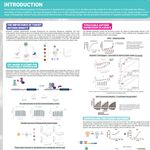
-
Mark Titus, PhD
Associate Professor, Department of Genitourinary Medical OncologyBIOGRAPHY
DATE: December 5th, 2017
TIME: 6:00AM PT
Androgen receptor (AR) signaling remains a driver in the lethal phenotype of prostate cancer, castrate resistant prostate cancer (CRPC). Novel second generation enhanced androgen inhibitors, abiraterone acetate and enzalutamide, improve survival of CRPC patients following androgen deprivation therapy. However, a significant group of patients demonstrate primary resistance to these agents and other patients acquire resistance during therapy. The mechanisms of enhanced androgen inhibitor resistance are complex. AR-dependent mechanisms involve AR overexpression, AR mutation, intra-tumor ligand biosynthesis, modulation of co-activators and co-repressors and expression of AR spice variants. AR-independent tumors activate glucocorticoid receptor and differentiate to aggressive variant or neuroendocrine phenotype with loss of tumor suppressors. Patient derived xenografts (PDX) developed from men with AR-positive or AR-negative CRPC were used to determine impact of AR signaling on glycolysis. We used two AR positive (MDA-PCa-133 and 180-30) and 2 AR negative (MDA-PCa-144 and 155) PDX grown in intact male mice. In vivo hyperpolarized MRI of each PDX was performed at a tumor volume of ~1.0 cm3 using 1-[13C]-pyruvate conversion to 1-[13C]-lactate. Ex vivo measurement of glycolytic metabolites, lactate, tricarboxylic acids and unique cancer metabolites were determined using NMR and mass spectrometry. We found increased glycolysis and alterations in other bioenergy metabolites in AR-positive PDX models and in low androgen environment (castration) versus AR-negative models. Our research supports the potential of hyperpolarized metabolic imaging in determining the underlying biology and in vivo phenotyping of CRPC.
Learning Objectives:
- the link between hyperpolarized imaging and quantitative mass spectrometry – proof of principle
- metastatic prostate cancer being a diverse disease
- analytical instrumentation in diagnostic and predictive marker development
For Research Use Only. Not for use in diagnostic procedures.
Please update your information
Certificate of Attendance
DOWNLOAD CERTIFICATE




